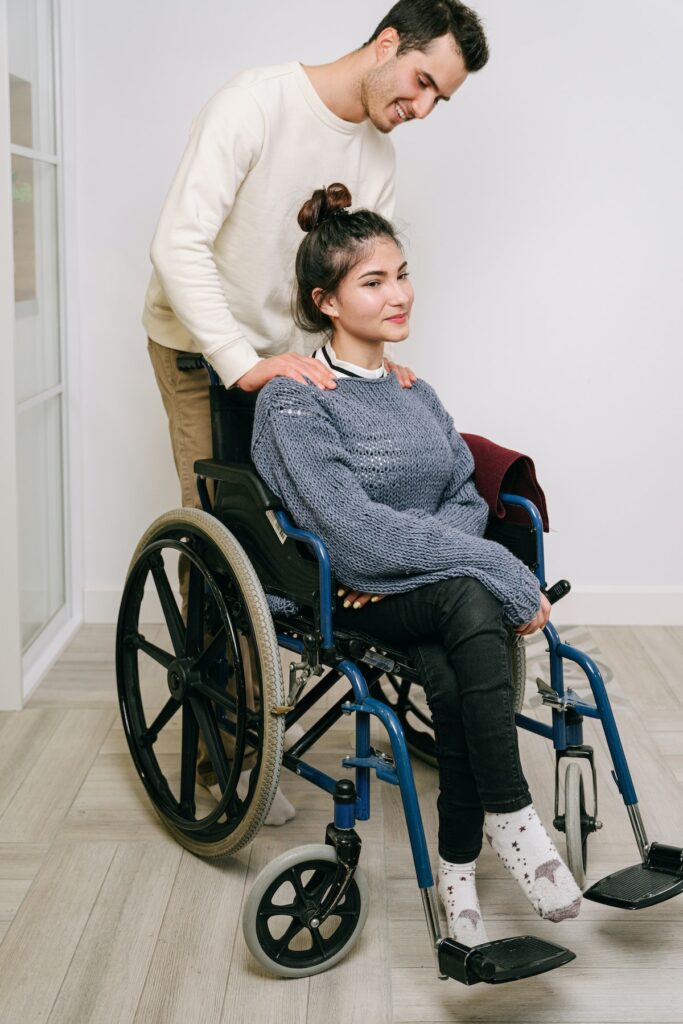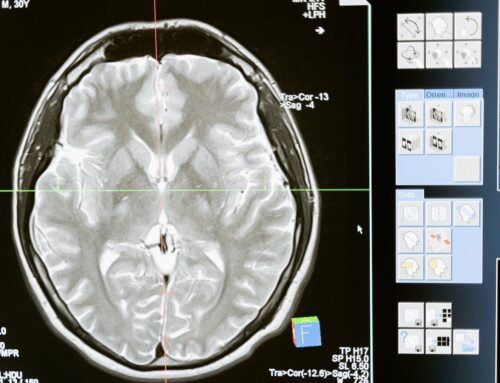How to Get Your Accident Benefits Application Started
In this blog I’ll show you how to kickstart the accident benefits application process, so you can begin to receive the accident benefits you need to start your journey toward reaching maximum medical recovery. You’ll learn how to access those accident benefits that’ll enable you to pay for additional incurred expenses related to your recovery and reintegration back into society, work, and your pre-injury life.

Getting Started
After you report the details of your motor vehicle accident to your claims adjuster, and he or she deals with the repairs to your car, your insurer will inquire about whether you, or anyone else, was injured in the automobile incident. If you were, then you must notify your claims adjuster as soon as possible, so your insurer could provide you with additional information about accident benefits that may be available to you.
If you want to know more about what to do immediately after you’re involved in a motor vehicle accident, just before you kickstart the Accident Benefits Application process, then click this “link” to read my blog entitled “What To Do After a Car Accident in Ontario?”

Application for Accident Benefits Package
Your claims adjuster will send you via regular mail, an Application for Accident Benefits Package, which will provide you with information in regards to benefits that you may receive under the Ontario Regulation 34/10: Statutory Accident Benefits Schedule (“SABS 34/10”), under Ontario’s Insurance Act, R.S.O. 1990, c. I.8, as a result of injuries you sustained in your motor vehicle accident.

You’ll find enclosed in the Application for Accident Benefits Package, OCF forms that are mandatory to complete, which are the following:
- An Application for Accident Benefits (OCF-1) form;
- It can be accessed, filled in online and downloaded in PDF format from the Financial Services Regulatory Authority of Ontario’s Website at this URL link: http://www.fsco.gov.on.ca/en/auto/forms/Documents/SABS-Claims-Forms/1224E.5.pdf
- An Employer’s Confirmation of Income (OCF-2) form; and
- It can be accessed, filled in online and downloaded in PDF format from the Financial Services Regulatory Authority of Ontario’s Website at this URL link: http://www.fsco.gov.on.ca/en/auto/forms/Documents/SABS-Claims-Forms/1003E.1.pdf
- A Disability Certificate (OCF-3) form.
- It can be accessed, filled in online and downloaded in PDF format from the Financial Services Regulatory Authority of Ontario’s Website at this URL link: http://www.fsco.gov.on.ca/en/auto/forms/Documents/SABS-Claims-Forms/1226E.1.pdf
You’ll also find enclosed in the package, OCF forms that are not mandatory to complete, but rather may be completed, which are, but not limited to, the following:
- A Permission to Disclose Health Information (OCF-5) form;
- It can be accessed, filled in online and downloaded in PDF format from the Financial Services Regulatory Authority of Ontario’s Website at this URL link: http://www.fsco.gov.on.ca/en/auto/forms/Documents/SABS-Claims-Forms/1225E.pdf
- An Application for Expenses (OCF-6) form;
- It can be accessed, filled in online and downloaded in PDF format from the Financial Services Regulatory Authority of Ontario’s Website at this URL link: http://www.fsco.gov.on.ca/en/auto/forms/Documents/SABS-Claims-Forms/1227E.pdf
- A Treatment and Assessment Plan (OCF-18) form; and
- It can be accessed, filled in online and downloaded in PDF format from the Financial Services Regulatory Authority of Ontario’s Website at this URL link: http://www.fsco.gov.on.ca/en/auto/forms/Documents/SABS-Claims-Forms/1207E.5.pdf
- A Minor Injury Guideline Treatment Confirmation (OCF-23) form.
- It can be accessed, filled in online and downloaded in PDF format from the Financial Services Regulatory Authority of Ontario’s Website at this URL link: http://www.fsco.gov.on.ca/en/auto/forms/Documents/SABS-Claims-Forms/1209E.5.pdf
All OCF forms can be accessed, filled in online and downloaded in PDF format from the Financial Services Regulatory Authority of Ontario’s website at the following URL link:
https://www.fsrao.ca/industry/auto-insurance-sector/auto-insurance-claims-forms-ocf-forms
The Financial Services Regulatory Authority of Ontario, which is an independent regulatory agency that was established to replace the Financial Services Commission for Ontario and the Deposit Insurance Corporation of Ontario, currently administers, regulates and enforces Ontario’s Insurance Act, R.S.O. 1990, c. I.8, plus its regulations, including the SABS 34/10.
In order for you to claim any accident benefits from your insurer, it is mandatory for you to first submit your completed Application for Accident Benefits (OCF-1) form within 30 days of receiving your Application for Accident Benefits Package. If you are unable to submit your completed application within the 30 day time frame, then you must contact your claims adjuster to discuss further, provide a reasonable explanation for the delay, and request an extension. Any delays in submitting your completed application may delay your insurer’s determination of your eligibility for the accident benefits you need to commence your recovery.
You can access, fill in online, and download in PDF format, the OCF-1 form from the Financial Services Regulatory Authority of Ontario’s website at the following URL link:
http://www.fsco.gov.on.ca/en/auto/forms/Documents/SABS-Claims-Forms/1224E.5.pdf
It’s important that your insurer promptly obtain documents pertinent to the determination of your eligibility for accident benefits, such as, but not limited to, your relevant clinical notes and records from your treating healthcare providers, which provide greater insight into whether the treatment plans you want approved by your insurer are reasonable and necessary. So, your insurer will ask you to complete the Permission to Disclose Health Information (OCF-5) form to permit disclosure of your health information. However, some personal injury law lawyers are opposed to having their injured clients sign it because they want to control the paper flow, while still making it clear to the claims adjuster that they will forward all relevant documents to him or her immediately upon receiving them.
You can access, fill in online, and download in PDF format, the OCF-5 form from the Financial Services Regulatory Authority of Ontario’s website at the following URL link:
http://www.fsco.gov.on.ca/en/auto/forms/Documents/SABS-Claims-Forms/1225E.pdf

As soon as your claims adjuster receives your completed application, he or she will process your claim and advise you which benefits you may be eligible for, and request any additional information that they require to adjust your claim. In the event that your insurer is unable to cover any part of your claim, then further to Ontario’s Insurance Act, R.S.O. 1990, c. I.8, they are obligated to provide you with a written explanation of their reasons for all, or any part, of your claim, including all steps you need to take, if you disagree with their decision.
Medical and Rehabilitation Benefits
Concerning medical and rehabilitation benefits, it’s important to understand that there are 3 different injury classifications, tiers or levels that will determine the applicable benefits that are available to you, which are as follows:
- The Minor Injury Guidelines classification, which have policy limits of $3,500;
- The Non-Minor Injury or Non-Catastrophic Injury classification, which have policy limits of $65,000 (if optional increased benefits weren’t purchased), in combination with attendant care benefits; and
- The Catastrophic Injury/Impairment classification, which has policy limits of $1 million (if optional increased benefits weren’t purchased), in combination with attendant care benefits.
Medical and rehabilitation benefits are available to you for reasonable and necessary expenses that have been incurred. This is a fact specific inquiry.
Medical and rehabilitation benefits encompass both treatment and assessment. On a practical level then, there needs to be a necessary connection in assessments, and the reasonableness requirement entails considering the goal of proposed assessments in the context of your impairments and benefits being pursued.
Medical benefits are integrated with rehabilitation benefits for the purposes of the SABS 34/10. The SABS 34/10 outlines what constitutes medical and rehabilitation benefits under sections 15 and 16, respectively. Medical benefits include, but are not limited to, the following: non-OHIP insured medical services, medication and prescription eyewear. Rehabilitation benefits focus on reintegrating you to the labour market and your activities of daily living, such as, but not limited to, the following: life skills and family or employment counselling, vocational or academic training and workplace or modifications.
Minor Injury Guideline Classification
If it’s determined that as a result of your motor vehicle accident, you only sustained a sprain, strain, whiplash associated disorder, contusion, abrasion, laceration or subluxation, including any clinically associated sequelae, then you may qualify for medical and rehabilitation treatment under the Minor Injury Guideline classification. The healthcare provider you see will make that determination and then he or she will submit a Minor Injury Guideline Treatment Confirmation (OCF-23) form for your insurer’s review and consideration. Irrespective of your accident benefit limits or any optional increased benefits you have purchased under your automobile insurance policy, the maximum amount of $3,500 is payable for medical and rehabilitation benefits under the Minor Injury Guideline classification for minor injuries.
You can access, fill in online, and download in PDF format, the OCF-23 form from the Financial Services Regulatory Authority of Ontario’s website at the following URL link:
http://www.fsco.gov.on.ca/en/auto/forms/Documents/SABS-Claims-Forms/1209E.5.pdf
Non-Minor Injury or Non-Catastrophic Injury Classification
If it is ultimately determined that your injuries are not minor or catastrophic, then all of your approved medical and rehabilitation treatment is subject to the non-minor injury or non-catastrophic injury classification limits, which in combination with attendant care benefits, is a maximum of $65,000, unless you have purchased any optional increased benefits under your automobile insurance policy. If it’s determined that your injuries fall within the non-minor injury or non-catastrophic injury classification, then your healthcare provider can submit a Treatment and Assessment Plan (OCF-18) form for your insurer’s review and consideration. Your insurer must approve your Treatment and Assessment Plan (OCF-18) form if it is determined to be reasonable and necessary, which means that following a contextual analysis, the following is determined:
- The proposed assessment, and expenses or services are related to your accident-related injuries and impairments;
- The identified rehabilitation goals will be achieved by the proposed assessment, and expenses or services;
- The cost — financial and non-monetary — of the assessment, and expenses or services correlate with a high success rate of accomplishing the identified rehabilitation goals;
- The expected degree of success of the assessment, and expenses or services is high and the progress will be closely monitored;
- There aren’t any significant risks associated with the assessment, and expenses or services; and
- Other assessments, and expenses or services would not be deemed to be better alternatives to achieve the identified rehabilitation goals.
You can access, fill in online, and download in PDF format, the OCF-18 form from the Financial Services Regulatory Authority of Ontario’s website at the following URL link:
http://www.fsco.gov.on.ca/en/auto/forms/Documents/SABS-Claims-Forms/1207E.5.pdf
Catastrophic Injury/Impairment Classification
If you or your healthcare provider thinks that your accident-related injuries satisfy the legislative criteria of a catastrophic impairment, which is set out in section 3.1(1) of the SABS 34/10, then you’ll have to get your healthcare provider or treating specialist to submit an Application for Determination of Catastrophic Impairment (OCF-19) form to your insurer. It’s of the utmost importance that you select the right healthcare provider or treating specialist, in that the nature of your accident-related injuries falls within the scope of practice of the healthcare provider or treating specialist. So, for example, accident-related traumatic brain injuries fall within the scope of practice of a neurologist, who “deals with the diagnosis and treatment of all categories of conditions and disease involving the central and peripheral nervous systems (and their subdivisions, the autonomic and somatic nervous systems), including their coverings, blood vessels, and all effector tissue, such as muscle” — Wikipedia definition.
You can access, fill in online, and download in PDF format, the OCF-19 form from the Financial Services Regulatory Authority of Ontario’s website at the following URL link:
http://www.fsco.gov.on.ca/en/auto/forms/Documents/SABS-Claims-Forms/1331E.pdf

If on the basis of this Application, your insurer concludes that your injuries are deemed to satisfy the criteria for a catastrophic impairment, then your insurer will designate you as catastrophically impaired. Then you’ll transition to the catastrophic injury/impairment classification, where your applicable accident benefit policy limits would increase to at least $1 million, unless you have purchased any optional increased benefits under your automobile insurance policy. Furthermore, the catastrophic impairment designation will grant you access to the highest tier of accident benefits, thereby entitling you to request extended medical rehabilitation and attendant care benefits, and other expenses. Your insurer may request a section 44 insurer’s medical examination, where they’ll retain a physician to assess you for the purpose of determining whether or not you should be designated as catastrophically impaired. If their physician determines that you’re not catastrophically impaired, then your lawyer can retain a physician to assess you and complete a rebuttal medico-legal report, and proceed to appeal the insurer’s determination to the Licence Appeal Tribunal.
Attendant Care Benefits
If as a result of the injuries you sustained in your motor vehicle accident, you are no longer able to take care of yourself, then you may be eligible for attendant care benefits. If so, then further to section 42(1) of the SABS 34/10, your insurer will require you to submit an application for attendant care benefits to them using An Assessment of Attendant Care Needs (Form 1) form, which, ever since September 1, 2010, must be completed by either a registered nurse or an occupational therapist. Your insurer will deduct the costs that’s associated with completing the Form 1 from the medical and rehabilitation benefits limits that’s available to you in your automobile insurance policy. Lastly, if it’s determined that your injuries fall within the Minor Injury Guideline classification, then you won’t be eligible for the attendant care benefit, as it’s only available to you if you fall within either the non-minor injury or non-catastrophic injury classification, or the catastrophic injury/impairment classification.
You can access, fill in online, and download in PDF format, the Form 1 form from the Financial Services Regulatory Authority of Ontario’s website at the following URL link:
http://www.fsco.gov.on.ca/en/auto/forms/Documents/SABS-Claims-Forms/1223E.1.pdf
Attendant care benefits under s. 19 of the SABS 34/10, pay for reasonable and necessary expenses for your self-care. Such benefits are available if you are not in the Minor Injury Guideline classification, and can show that you are substantially unable to engage in self-care tasks, such as, but not limited to, dressing, grooming, feeding, mobility, laundry, hygiene, or you require supervisor care.
Prior to September 1, 2010, your family member could provide attendant care, as was often the case, since the costs of a professional service provider was too high to cover the monthly attendant care needs of an insured person. After September 1, 2010, the amendments introduced the definition of “incurred expense”, which is defined under section 3(7)(e) as requiring the following criteria:
- You must receive the services;
- You paid the expense or promised to pay the expense, or you’re legally obligated to pay the expense; and
- The person who provided you the services either did so in the course of employment in which they would ordinarily have been engaged, or they sustained an economic loss as a result of providing the services.

Quantum of Attendant Care
Prior to September 1, 2010, if you were in the non-minor injury or non-catastrophic injury classification, then you could receive up to $3,000 per month for a maximum of $72,000 for 104 weeks. If you were in the catastrophic injury/impairment classification, then this amount increased to $6,000 per month, and up to a maximum of $1 million for life.
After September 1, 2010, attendant care was not available if you were placed in the Minor Injury Guideline classification. If you are in the non-minor injury or non-catastrophic injury classification, then you’ll still receive up to $3,000 per month for 104 weeks, but up to a maximum of $36,000. There was no change for catastrophic claimants in the catastrophic injury/impairment classification.
And after June 1, 2016, as noted above, attendant care benefits are now combined up to a maximum of $65,000 with medical and rehabilitation benefits, if you are in the non-minor or non-catastrophic injury classification, and up to $1 million combined with medical and rehabilitation benefits, if you are in the catastrophic injury/impairment classification.
The Three Weekly Disability Benefits
If you sustained injuries as a direct result of your motor vehicle accident, then you may be eligible to receive one of the following three weekly disability benefits, as follows:
- Income replacement benefits;
- Non-earner benefits; and
- Caregiver benefits.
Once your insurer receives your Application for Accident Benefits (OCF-1) form, they will make a preliminary determination about whether any of these weekly disability benefits apply to you, but they don’t have the last word on it, as you can appeal their decision to the Licence Appeal Tribunal if you disagree.
You can access, fill in online, and download in PDF format, the OCF-1 form from the Financial Services Regulatory Authority of Ontario’s website at the following URL link:
http://www.fsco.gov.on.ca/en/auto/forms/Documents/SABS-Claims-Forms/1224E.5.pdf
Income Replacement Benefits
Eligibility Requirements
Sections 4 through to 11 of the SABS 34/10 set out the eligibility and entitlement to income replacement benefits (“IRBs”). IRBs are payable if an insured person was at least 16 years of age or more and employed or self-employed on the date of the motor vehicle accident, or worked at least 26 of the 52 weeks before the accident (or was receiving employment insurance at the time of the accident).
The disability test to be met is a substantial inability to perform the essential tasks of employment within 104 weeks of the accident. After 104 weeks, the test changes to a complete inability to engage in any employment for which you are reasonably suited by reason of education, training or experience.
The case entitled Lombardi v. State Farm Mutual Automobile Insurance Co., [2001] O.F.S.C.I.D. No. 55 (Ont. F.S.C.) (FSCO A99-000957, April 11, 2001), is the leading FSCO decision on the interpretation of the phrase “complete inability to engage in any employment”.
Quantum of Income Replacement Benefits
Prior to September 1, 2010, IRBs were payable at 80 percent of your net weekly income after a one week waiting period. After September 1, 2010, the calculation changed to 70 percent of your gross income after a one-week waiting period. After 104 weeks, the amount payable is the greater of your weekly income benefit or $185 per week. Unless optional increased benefits were purchased, the maximum payable to you is $400 per week. Section 8 of the SABS 34/10 provides a ramp down calculation after age 65.
If you return to work within 104 weeks and you’re unable to continue, entitlement should resume so long as you continue to meet the disability test.
Seventy percent of your post-accident income from employment or self-employment is deducted from the IRB weekly income.
Deduction of Collateral Benefits
Section 47 of the SABS 34/10 permits an insurer to deduct collateral benefits from your IRBs and non-earner benefits. These include any temporary disability benefits or other periodic benefits being received by you in respect of a period following the accident and in respect to an impairment that occurred before your accident.
So, if you’re later found entitled to Canada Pension Plan Disability Benefits (“CPP-D”), or short-term (“STD”) or long-term disability (“LTD”) benefits, your insurer is entitled to deduct these amounts from what it owes. Following the hierarchy of payors, CPP-D is considered the payor of first instance and LTD is the second payor.
The insurer must give you notice within 12 months after the payment of the amount that is to be repaid or it forgoes its ability to recoup repayment.
Non-Earner Benefits
Section 12 of the SABS 34/10 sets out the requirements for entitlement to non-earner benefits (“NEBs”), as follows:
- You must suffer an impairment as a result of an accident; and
- You must suffer a complete inability to carry on a normal life as a result of and within 104 weeks after the accident.
You must not qualify for an income replacement benefit. Alternatively, NEBs are payable if you were enrolled in educational pursuits on the date of your accident or within one year of the accident, and you meet the disability test.
Section 3(7)(a) of the SABS 34/10 defines “complete inability” to carry on a normal life if, and only if, as a result of the accident, you sustain an “impairment that continuously prevents the person from engaging in substantially all of the activities in which you ordinarily engaged before the accident”.
The phrase “substantially all” is not defined in the SABS 34/10. However, the Court of Appeal for Ontario in Galdamez v. Allstate Insurance Co. of Canada, [2012] O.J. No. 3394, at paragraph 39, held that “substantially all” does not mean “all”. It means more than most, but not all activities.
After September 1, 2010, NEBs were not payable before you turned 16 years of age. Effective June 1, 2016, the age requirement was raised to 18.
The waiting period also changed from 26 weeks to four weeks as of June 1, 2016. However, whereas you could receive NEBs up to age 65 prior to June 1, 2016, NEBs are now only payable for 104 weeks.
If you’re found eligible, NEBs are payable to you at the sum of $185 per week up to 104 weeks, and if your accident was prior to June 1, 2016, the amount would increase to $320 per week after 104 weeks, if you were enrolled as a full-time student at the time of your accident or had completed your education less than one year before the accident. After June 1, 2016, NEBs are only payable at the rate of $185 per week for a maximum of 104 weeks.
The leading case on NEBs is the Ontario Court of Appeal case entitled Health v. Economical Insurance Co. [2009] O.J. No. 1877 ONCA 391 (Ont. C.A.), which developed several principles on how the definition of “complete inability” should be interpreted for the purpose of determining eligibility for NEBs.
Caregiver Benefits
Prior to September 1, 2010, caregiver benefits (“CGBs”) were available to non-catastrophic claimants. After 2010, if no option was purchased, these benefits are only available if you are found to be catastrophically impaired.

Under section 13 of the SABS 34/10, in order for you to be found eligible for CGBs, you must live with a person in need of care and be the primary caregiver for the person in need of care, and not receive any payment for caregiving activities. The SABS 34/10 defines a “person in need of care” as one who is under 16 years of age or who requires care because of physical or mental incapacity.
The disability test is outlined in section 13(1) — you must suffer a substantial inability to engage in the caregiving activities in which you were engaged in at the time of your motor vehicle accident for the first 104 weeks. After 104 weeks, the test becomes stricter and is the same as that for NEBs — a complete inability to carry on a normal life.
There is no waiting period for CGBs. So, if you’re eligible, you receive $250 per week for the first person in need of care and $50 per week for each additional person in need of care. This amount is reduced as your children turn 16 and are no longer in need of care.
If you elect IRBs or NEBs, and later you’re found to be catastrophically impaired, then section 35(2) allows you to re-elect to the CGB. Elections are otherwise considered final.
The Disability Certificate (OCF-3) Form
If you want to claim any of the aforementioned weekly disability benefits, then your insurer will require you to complete the mandatory Disability Certificate (OCF-3) form. You fill in Part 1 through to 3 of the OCF-3 form, and then give it to your healthcare provider — chiropractor, dentist, nurse practitioner, occupational therapist, optometrist, physician, physiotherapist, psychologist, speech language pathologist, et cetera. Only an authorized healthcare provider can complete the OCF-3 form.
After your healthcare provider has explained your accident-related injury to you, answered your questions, and addressed your concerns, then you print your name, sign your signature, and include the date that you signed it, in Part 4 of the OCF-3 form. Your healthcare provider will complete the rest of the OCF-3 form from Part 5 through to 10, based on his or her most recent assessment of you, and then submit it to your insurer on your behalf. Again, it’s of the utmost importance that you select the right healthcare provider or treating specialist, in that the nature of your accident-related injuries falls within the scope of practice of the healthcare provider or treating specialist. So, for example, accident-related mental and behavioral psychological disorders fall within the scope of practice of a psychiatrist, or a psychologist, who “practices psychology and studies normal and abnormal mental states, perceptual, cognitive, emotional, and social processes and behaviour by experimenting with, and observing, interpreting, and recording how individuals relate to one another and their environments” — Wikipedia definition. Furthermore, once you identify the right healthcare provider or treating specialist to complete Part 5 through to 10 of the OCF-3 form, it is essential that he or she takes his or her time and completes the OCF-3 form carefully and accurately, following a thorough, comprehensive assessment, because his or her medical opinion will be relied upon by people who review the disability certificate to make important decisions concerning your eligibility to weekly disability benefits, as well as medical and rehabilitation benefits.
You can access, fill in online, and download in PDF format, the OCF-3 form from the Financial Services Regulatory Authority of Ontario’s website at the following URL link:
http://www.fsco.gov.on.ca/en/auto/forms/Documents/SABS-Claims-Forms/1226E.1.pdf
The Employer’s Confirmation of Income (OCF-2) Form
If you were employed at the time of your motor vehicle accident and you want to claim Income Replacement Benefits, then you have to submit the mandatory Employer’s Confirmation of Income (OCF-2) form. You fill in Part 1 through to 3, and then give the OCF-2 form to your employer, or former employer(s), to complete the rest, from Part 4 through to 8. If you listed more than one employer on your Application for Accident Benefits (OCF-1) form, then make sure each employer fills out a separate OCF-2 form.
If you need another OCF-2 form, then you can either acquire another one from your insurer, or fill it in online, or download it in PDF format and print the OCF-2 form from the Financial Services Regulatory Authority of Ontario’s website at the following URL link:
http://www.fsco.gov.on.ca/en/auto/forms/Documents/SABS-Claims-Forms/1003E.1.pdf

Election of Income Replacement, Non-Earner or Caregiver Benefit (OCF-10) Form
If more than one of the three weekly disability benefits applies to you, then you’ll have to elect one of them by submitting an Election of Income Replacement, Non-Earner or Caregiver Benefit
(OCF-10) form.
You can access, fill in online, and download in PDF format the OCF-10 form from the Financial Services Regulatory Authority of Ontario’s website at the following URL link:
http://www.fsco.gov.on.ca/en/auto/forms/Documents/SABS-Claims-Forms/1228E.pdf
Reimbursement of Expenses
Your automobile insurance policy may cover the reimbursement for additional out-of-pocket expenses you incurred in relation to your recovery from your accident-related injuries. You can apply for reasonable and necessary expenses incurred as a result of your motor vehicle accident, which are not covered under another plan. The payment of additional incurred expenses, may include, but are not limited to, the following: the costs of medical and rehabilitation treatment, lost educational expenses, caregivers, attendant care and housekeeping services, transportation expenses, expenses of visitors, and the cost to repair or replace lost or damaged clothing, dentures, glasses, prostheses, hearing aids, et cetera. Also, specifically concerning transportation expenses, if you have to travel extended distances to receive medical treatment or attend medical appointments in relation to your accident-related injuries, then you may qualify to be reimbursed for certain travel expenses.
Application for Expenses or Expenses Claim (OCF-6) Form
In order to submit your additional incurred expenses to your insurer to be reimbursed, you must record and submit them using an Application for Expenses or Expenses Claim (OCF-6) form.
You can access, fill in online and download in PDF format, the OCF-6 form from the Financial Services Regulatory Authority of Ontario’s website at the following URL link:
http://www.fsco.gov.on.ca/en/auto/forms/Documents/SABS-Claims-Forms/1227E.pdf
Privacy
Concerning the privacy of your personal information, your insurer collects, uses and discloses your personal information for the purposes of claim administration, which includes, but is not limited to, obtaining documentation to assess liability and coverage. Your personal information may also be used for the purposes of underwriting bonds, policies of insurance and all other related insurance products offered by your insurer and all related documentation, bond or policy management, handling customer complaints, any activities associated with extensions, renewals, substitutions and modifications of the bond or policy of insurance. Your insurer will also use and disclose your personal information in the ordinary course of business by, and to, its affiliates, reinsurers, legal advisors, other financial institutions, regulatory bodies and any third party they deemed necessary. This is not an exhaustive list, so for more specific information on how your personal information is used and disclosed by your insurer, please refer to their Privacy Policy, which they’ll provide you a copy of, or alternatively direct you to their website to review it online.
Your Right to Dispute Your Insurer’s Determination
If your claim for statutory accident benefits under the SABS 34/10 is partially approved, reduced or denied by your insurer, then further to Ontario’s Insurance Act, R.S.O. 1990, c. I.8, you have the legal right to dispute your insurer’s determination. You can appeal your insurer’s decision by filing an application with the Licence Appeal Tribunal (“LAT”) — Automobile Accident Benefits Service (“AABS”) within 2 years of the date of the partial approval, reduction or denial. If you don’t appeal the partial approval, reduction or denial of your claim within the two year time limit, you will lose your right to dispute your insurer’s determination.

In order to appeal or apply to the LAT, you must complete the appropriate forms or provide the necessary details in writing. In order to specifically file an application to the LAT — Automobile AABS, you have to do the following 4 steps:
- You first complete an Notice of Appeal — AABS Application by an Injured Person (“AABS Application”) form;
- It can be accessed, filled in online and downloaded in PDF format from the AABS’s website at this URL link: https://tribunalsontario.ca/documents/lat/02027E_Notice-of-Appeal_Liquor-Licence-Act-Gambling-Control-Act.pdf
- You serve your insurer with your AABS Application form by sending your insurer a copy;
- You complete an AABS Certificate of Service form, in order to explain how you served, or sent, a copy of your AABS Application form to your insurer; and
- It can be accessed, filled in online and downloaded in PDF format from the AABS’s website at this URL link: https://tribunalsontario.ca/lat/general-service/forms/
- You submit your completed AABS Application and Certificate of Service form to AABS, and then pay the AABS application fee.
All of the AABS forms, including the aforementioned AABS Application form and the AABS Certificate of Service form, can be downloaded and printed to be filled in by hand, as well filled in online on your computer or mobile device. All of the AABS forms can be accessed from the AABS’s website at the following URL link:
You should provide reasons for your appeal or application and the result or action you are seeking. Also, in order to avoid delays in processing your appeal or application, you should provide the following:
- Your full name, address, email address and telephone number, if you have chosen to represent yourself; or
- Your legal counsel or agent’s full name, address, email address, telephone and fax numbers, if you have chosen to have legal counsel or an agent to represent you; and
- A copy of the decision, proposal or order being appealed.
Your appeals and applications can be sent to the LAT by mail or email.
Lastly, if you want more information on filing an appeal or application, then visit the following URL link:
I hope you found this information valuable. Rudder Law Group’s website is your one-stop source for answers to all of your legal questions concerning catastrophic impairment law and personal injury law.




